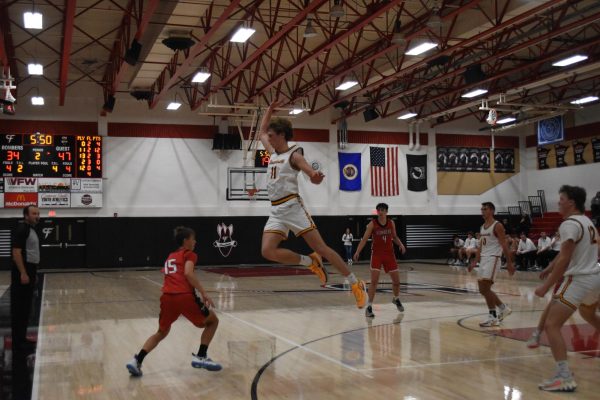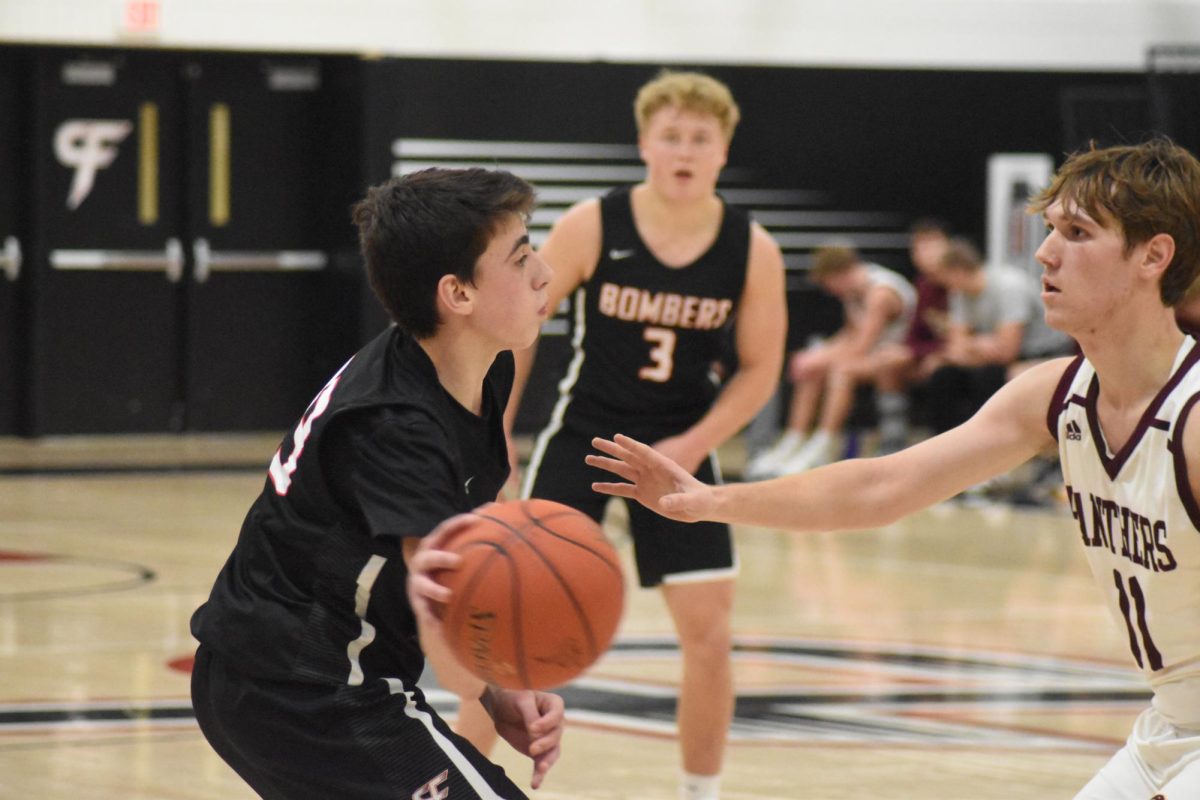Thirty five seconds starting…now. In a mere 35 seconds, the players’ time will expire and this article will be done. Starting in the 2023 and 2024 season, the Minnesota High School League followed in the footsteps of other states around the country by implementing a thirty-five-second shot clock in all varsity basketball games, for both boys and girls. With the the shot clock, some teams have been compelled to speed up their offense and change their style of offense. Many high school basketball fans are wondering what the shot clock is, basic rules of the shot clock, adjustments Cannon Falls basketball teams have made, and the shot clock beyond Minnesota.
The shot clock in basketball is a timer located above the backboard on both ends of the court. The level of play determines the time on the shot clock; the new shot clocks in high school basketball are thirty-five seconds. This means that teams have thirty-five seconds on offense to take a shot. According to Tim Leighton with the National Federation of State High School Association (NFHS), the enactment of the shot clock will work to “eliminate stalling tactics,” and therefore make the game more interesting. In addition, the shot clock will help to prepare athletes who will be playing basketball at a higher level after high school. Although the standard shot clock time is thirty-five seconds, depending on how the offense gains possession of the ball, the shot clock may differ.

There are many different scenarios that can occur in basketball which means that there must be clear rules for the time that gets put on the shot clock or when to reset the shot clock. In a presentation regarding shot clock rules, Minnesota State High School League Assistant Director Jason Nickleby explained many rules of the shot clock. As a general rule, if there is a stop of play, self-inflicted by the offense, the shot clock will not change. If the defense causes the stop in play, the shot clock will remain the same or go back to twenty seconds, whichever is longer. If there is a turnover and the defense gains possession of the ball in their front court — same side as their hoop — the shot clock will get set to twenty seconds and if it is in their backcourt — the opposite side as their hoop — the shot clock will get set to thirty-five seconds. With the shorter time to shoot, teams must make adjustments to their offensive strategy depending on the time left on the shot clock.
At Cannon Falls, both the girls and boys basketball teams have made adjustments in order to accommodate the addition of the shot clock. Gavin Johnson, a junior on the Cannon Falls Boys Basketball team, expressed that they made adjustments and they must “always be aware of the shot clock” and how much time is left on it. As a player, Johnson thinks it does not feel much different except for ensuring the team takes good shots, even when the clock is winding down. For the girls’ team, adjustments in their style of offense has been the biggest difference from the implementation of the shot clock. C-squad and Assistant Varsity Coach Sean Wingfield mentioned rather than working the ball around, seeking the best possible shot, the team has begun running plays which lead to quicker shots. Overall at Cannon Falls, the shot clock has created a sense of urgency but also has not had a major impact on how the players feel as they play. Johnson and Wingfield both agree the shot clock has added a new element to the game but a positive one.
The shot clock has been a part of basketball for many years in the NBA and college, however, it has just recently begun to take effect in high school basketball. According to Leighton, the NFHS approved the use of a thirty-five second shot clock in high school basketball over three years ago but the uptake in individual states has been slow. Currently, in the United States, twenty-seven states use a shot clock in some form, but due to the cost of installing the clocks, training required for clock operators, and more, not all states have chosen to make the change.
Time is up. It has been at least thirty-five seconds and the reader must be done reading this article. Although thirty-five seconds to read an article typically isn’t enough, it can be enough for an offensive possession in basketball, however, it increases the pressure put on the offense, and adds a new twist to the game at the high school level.




